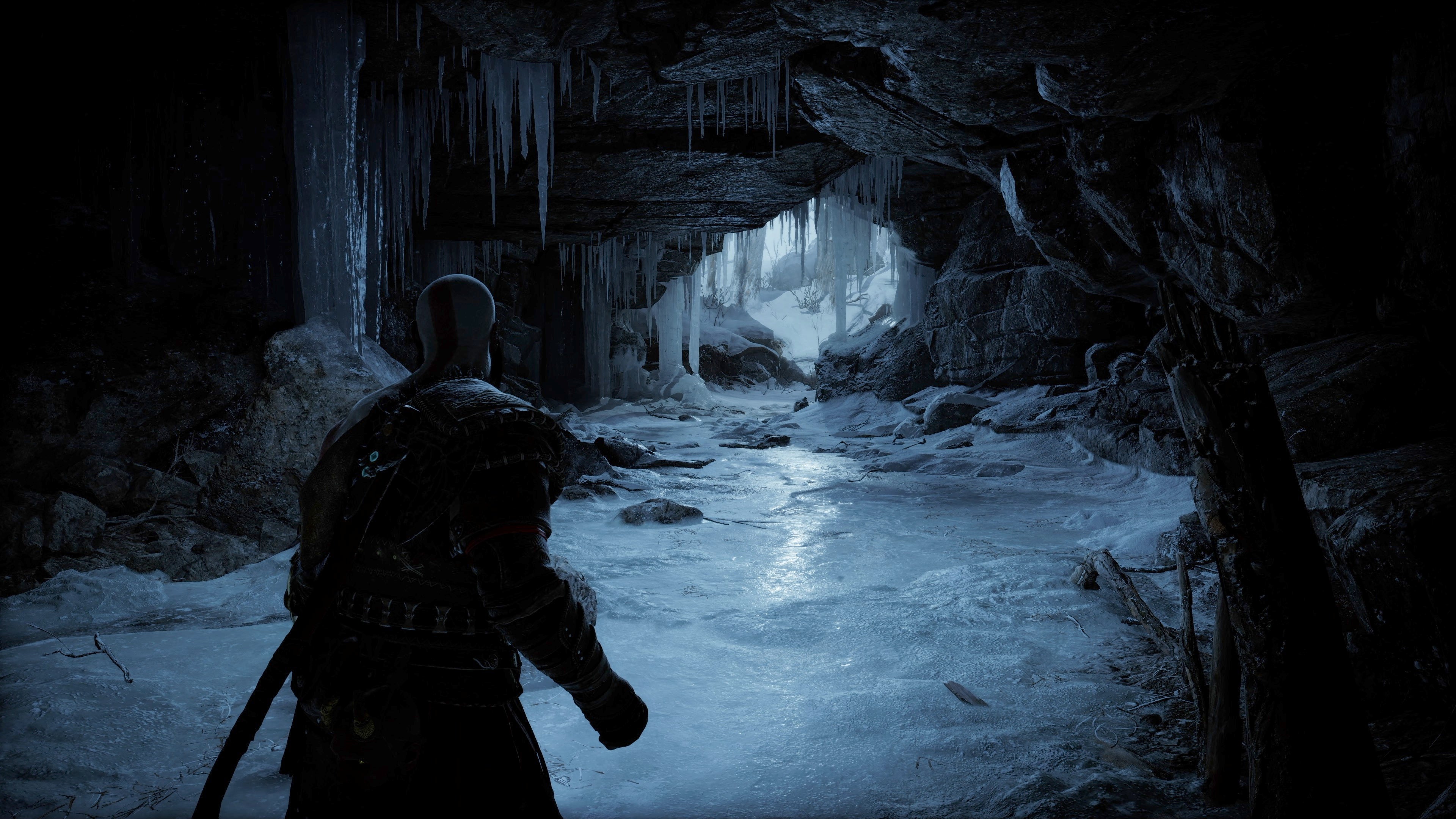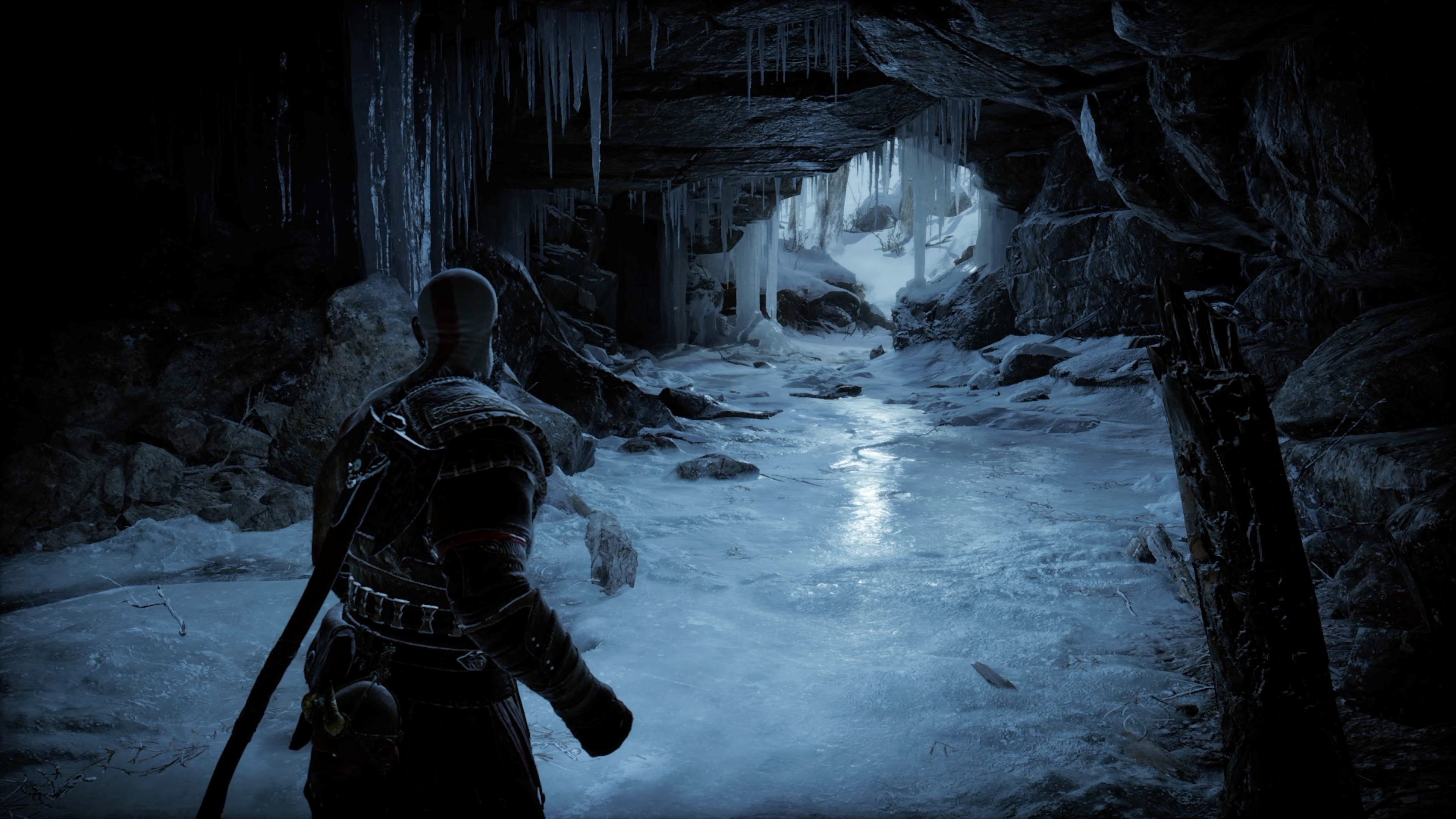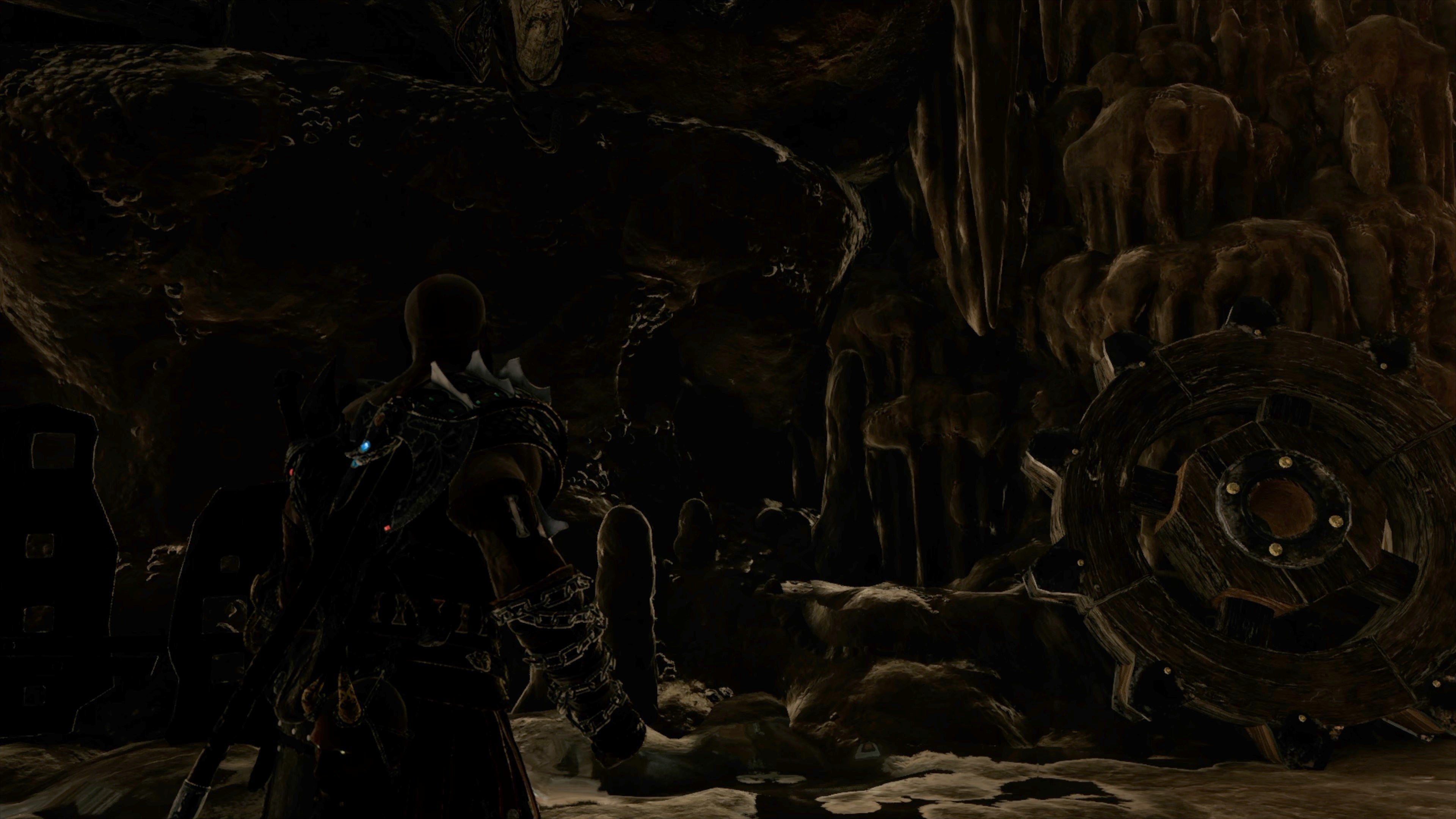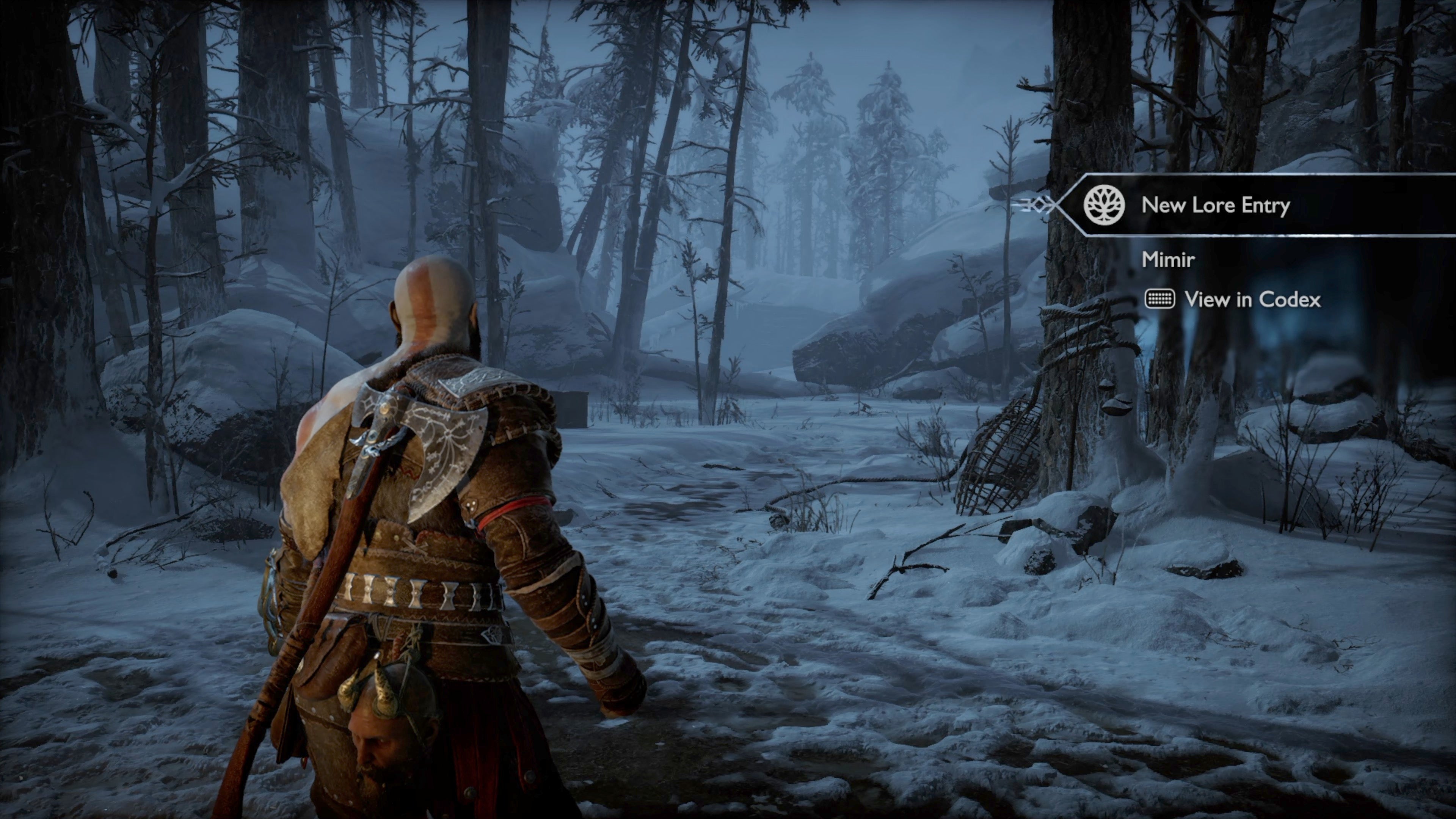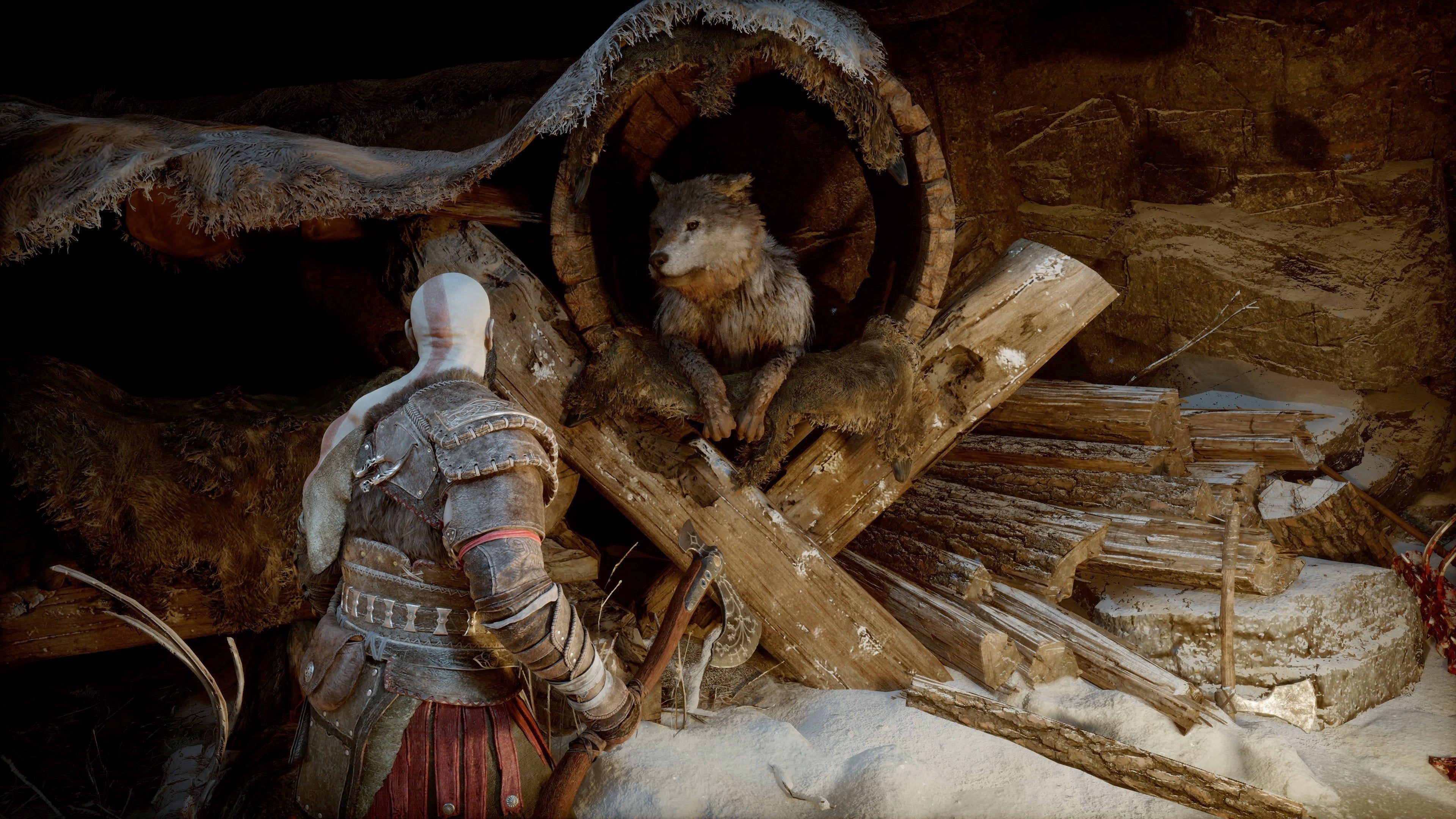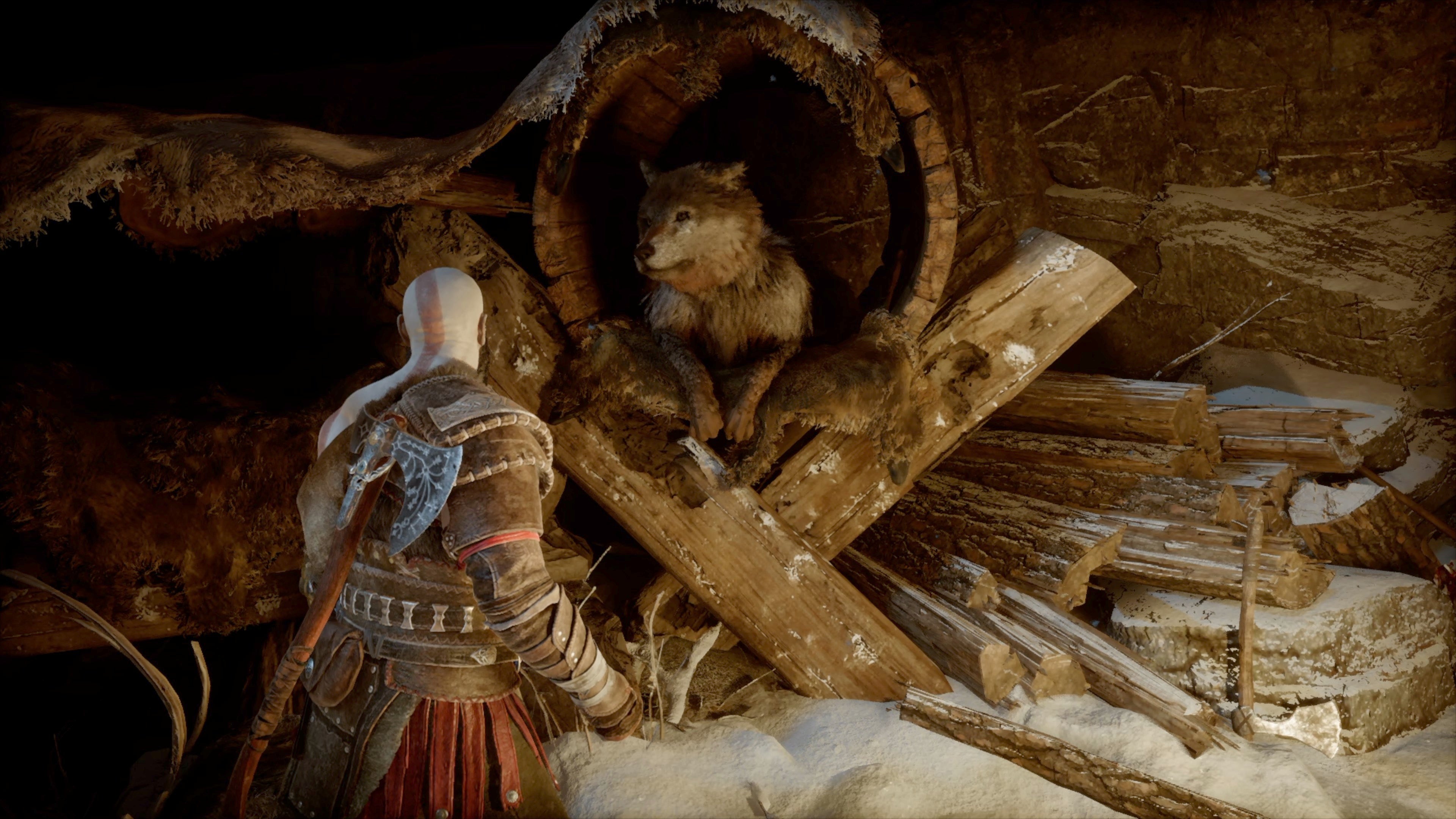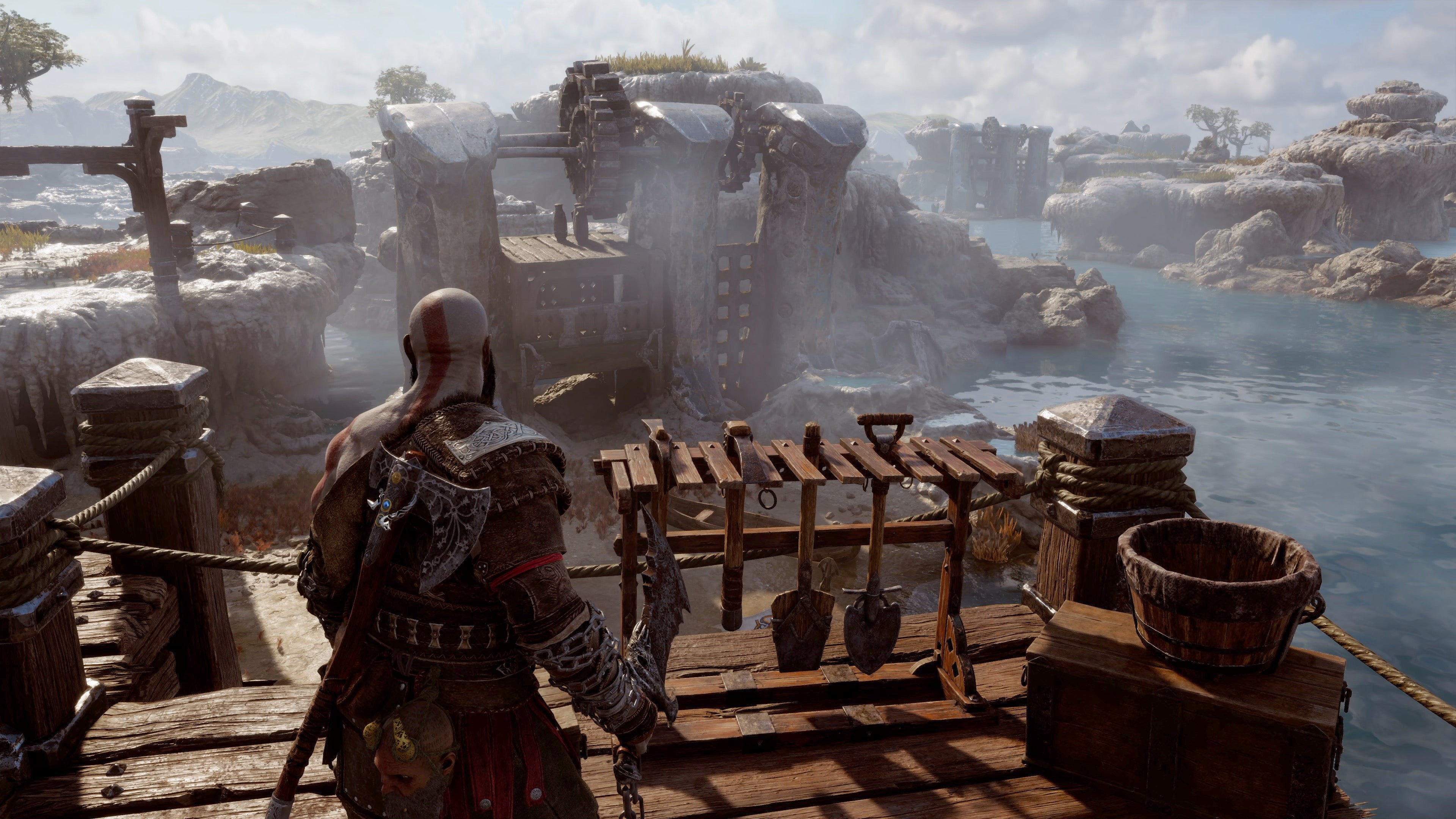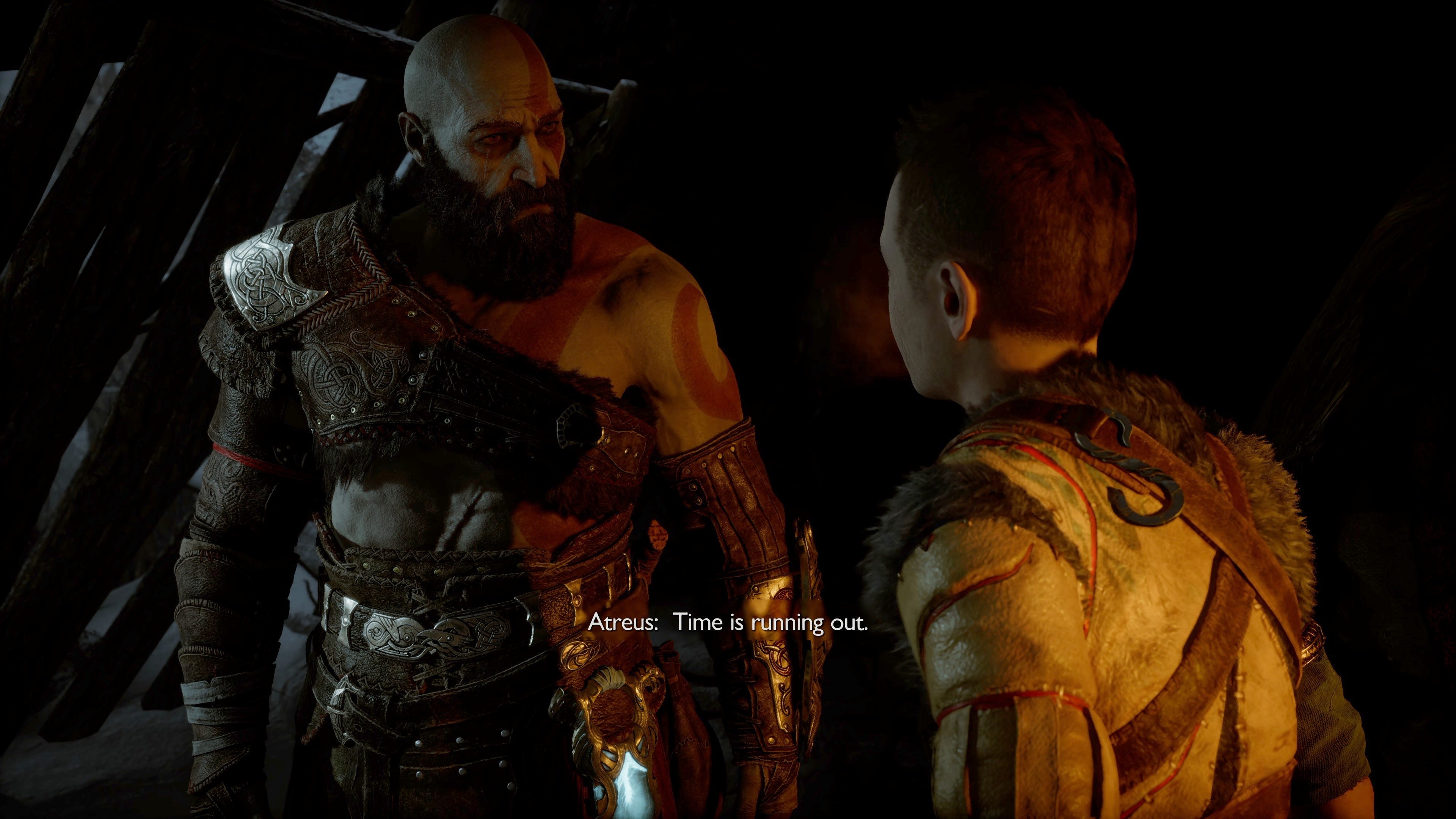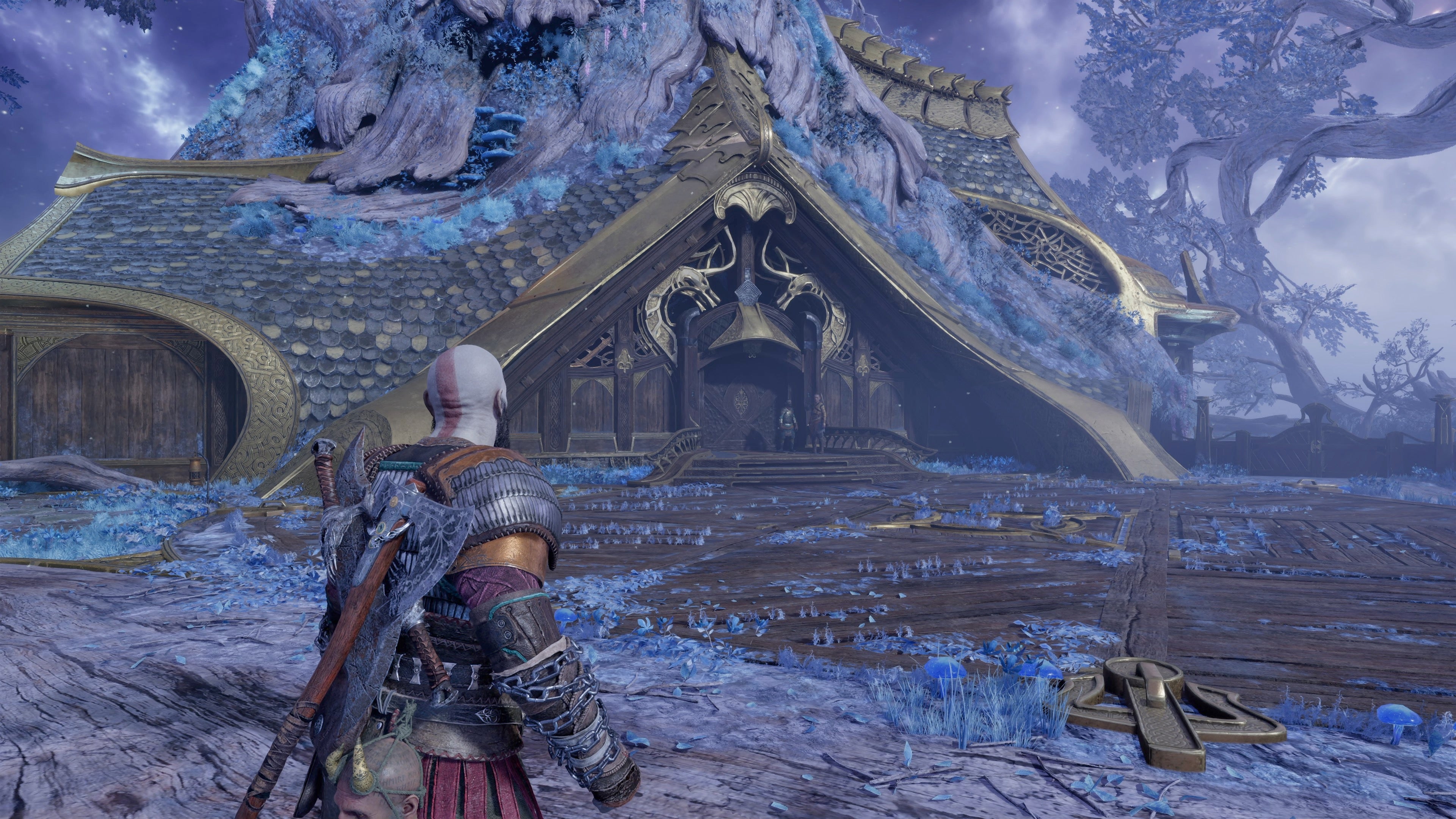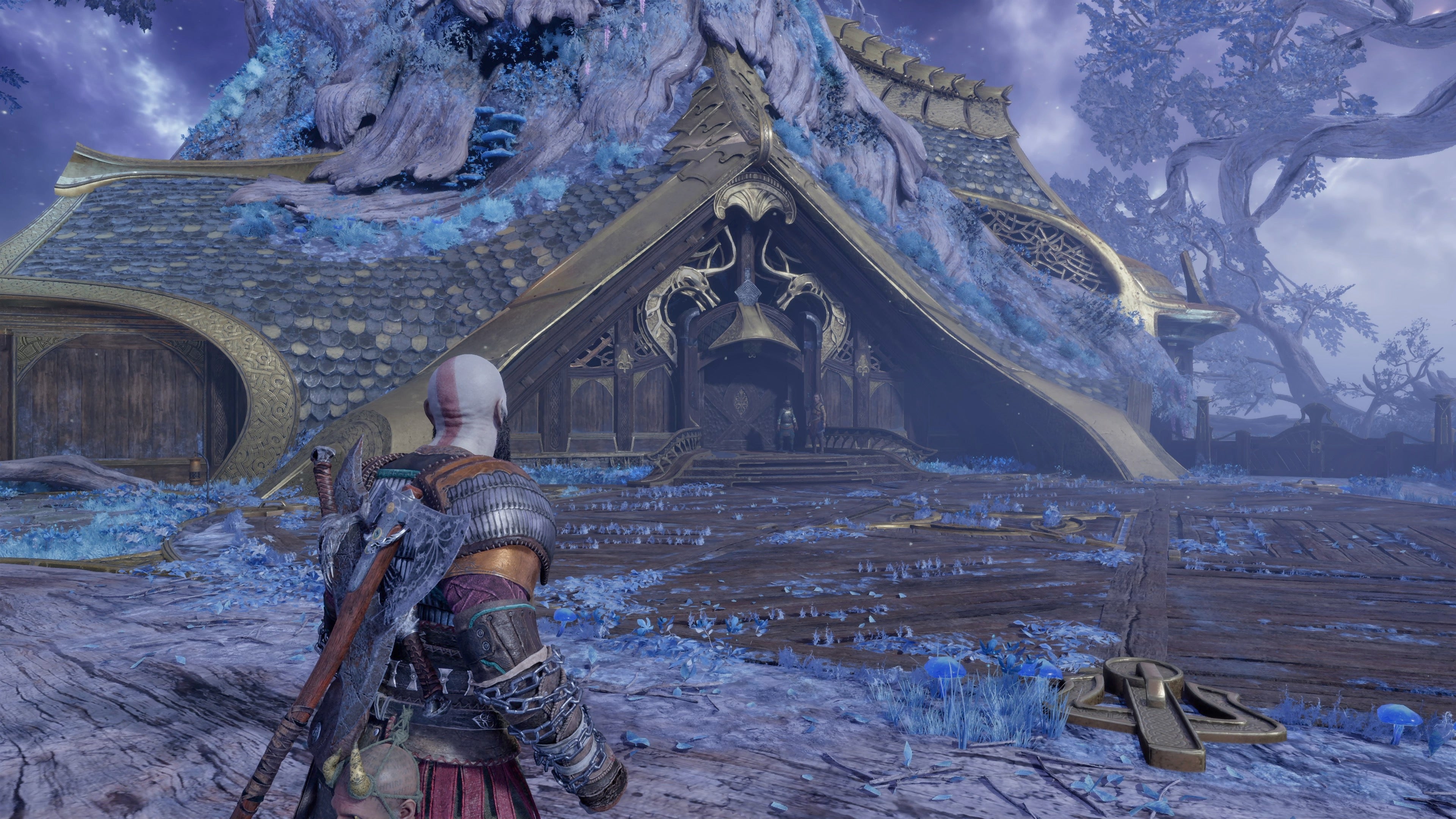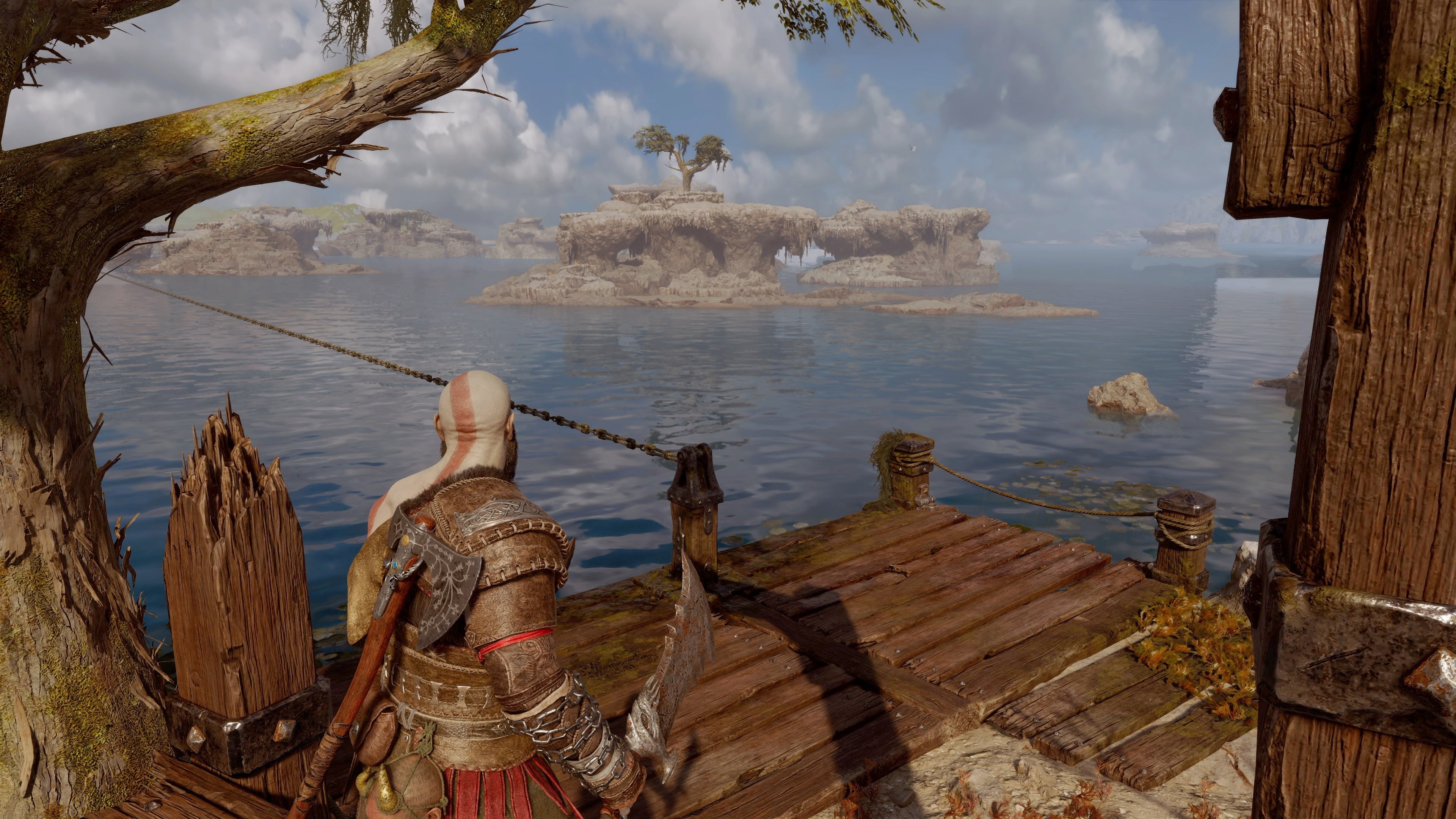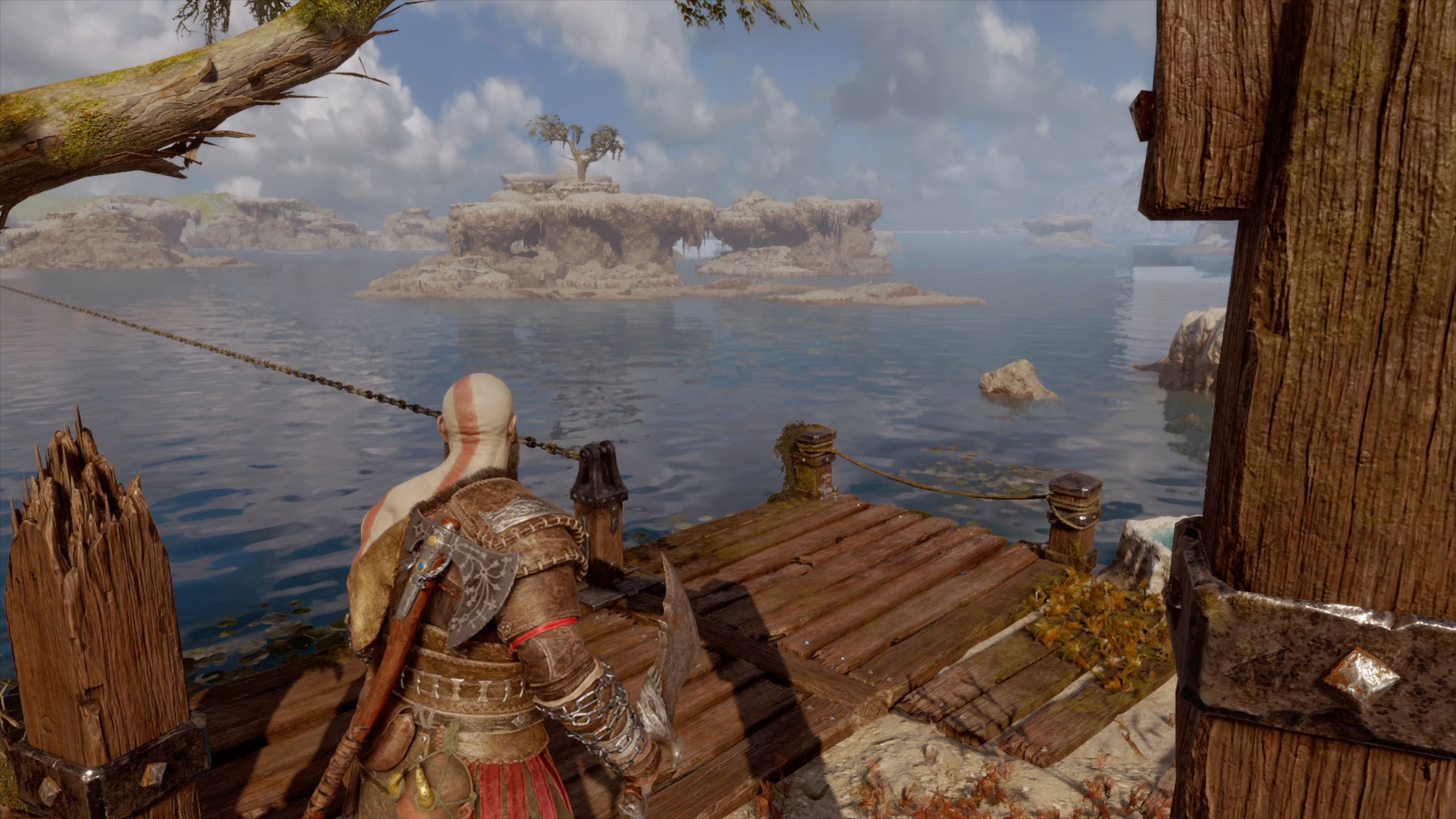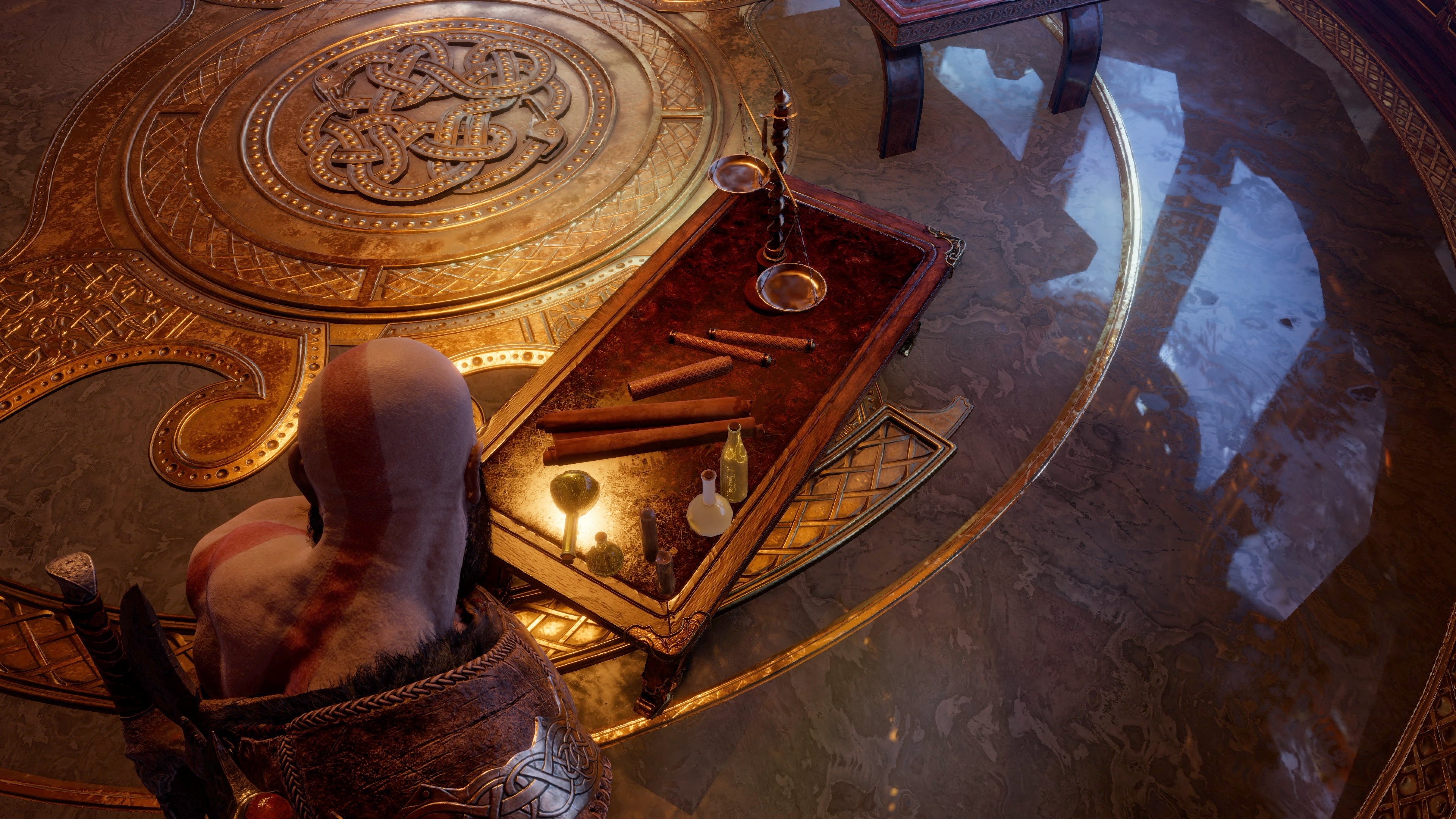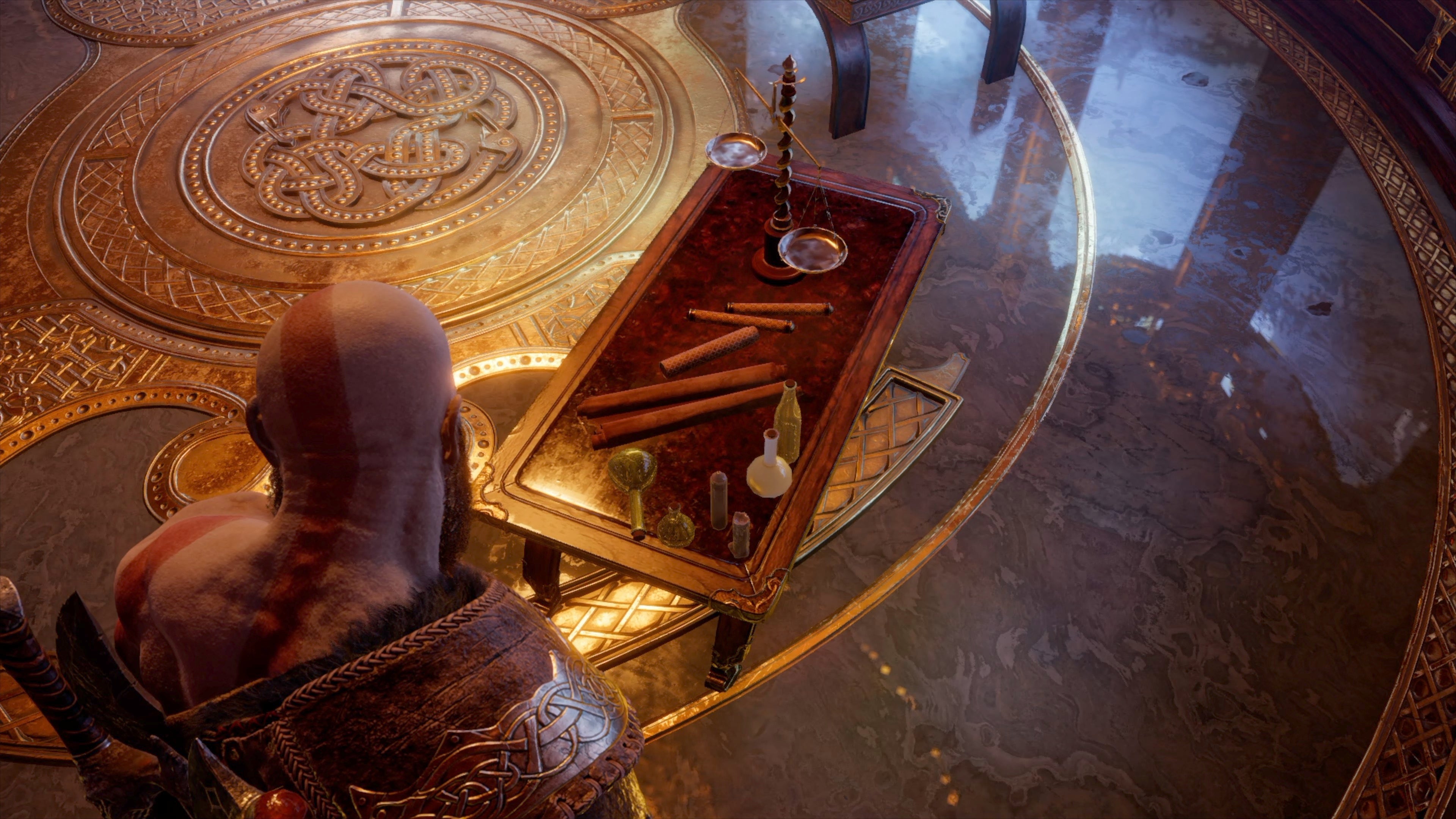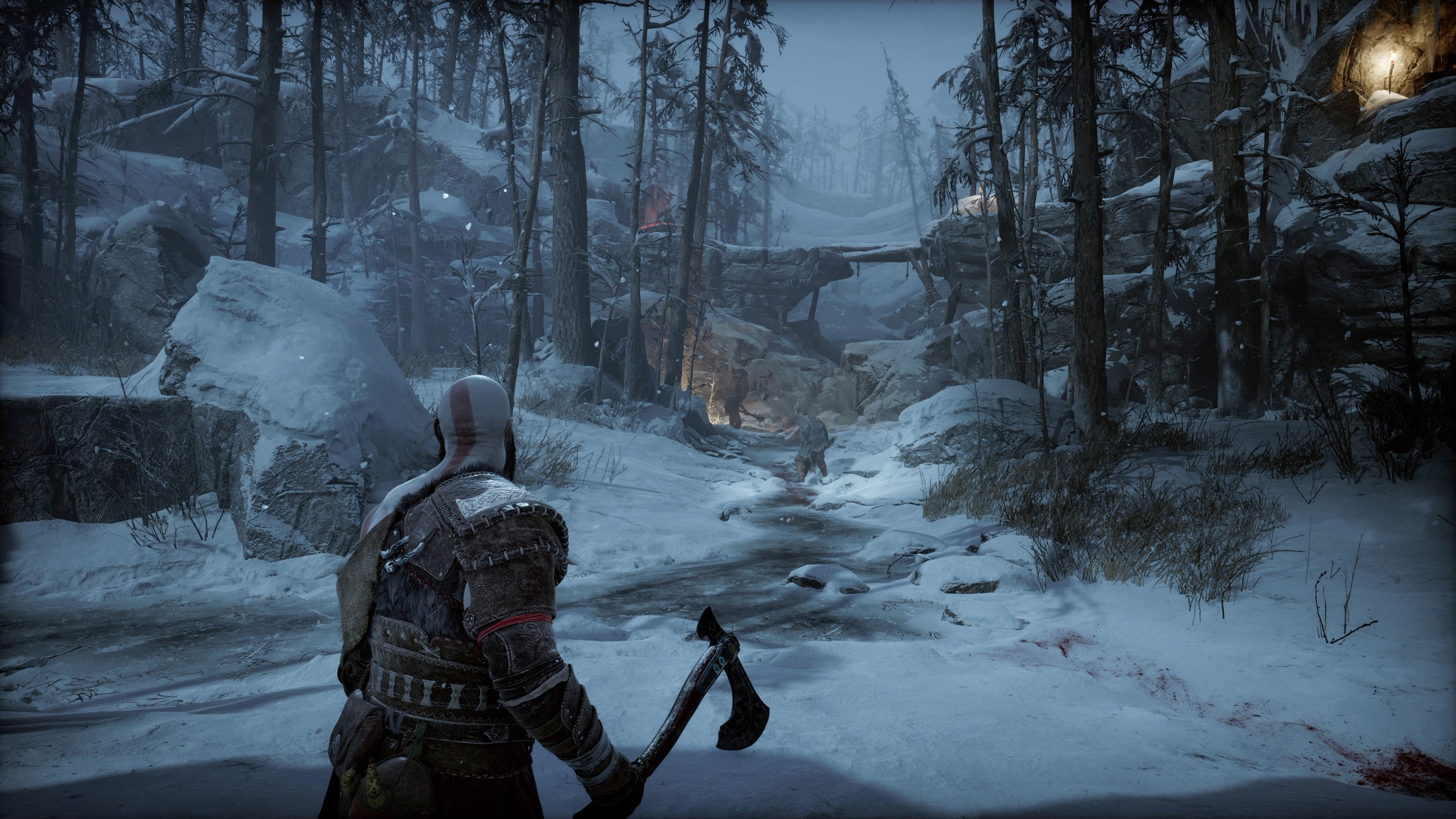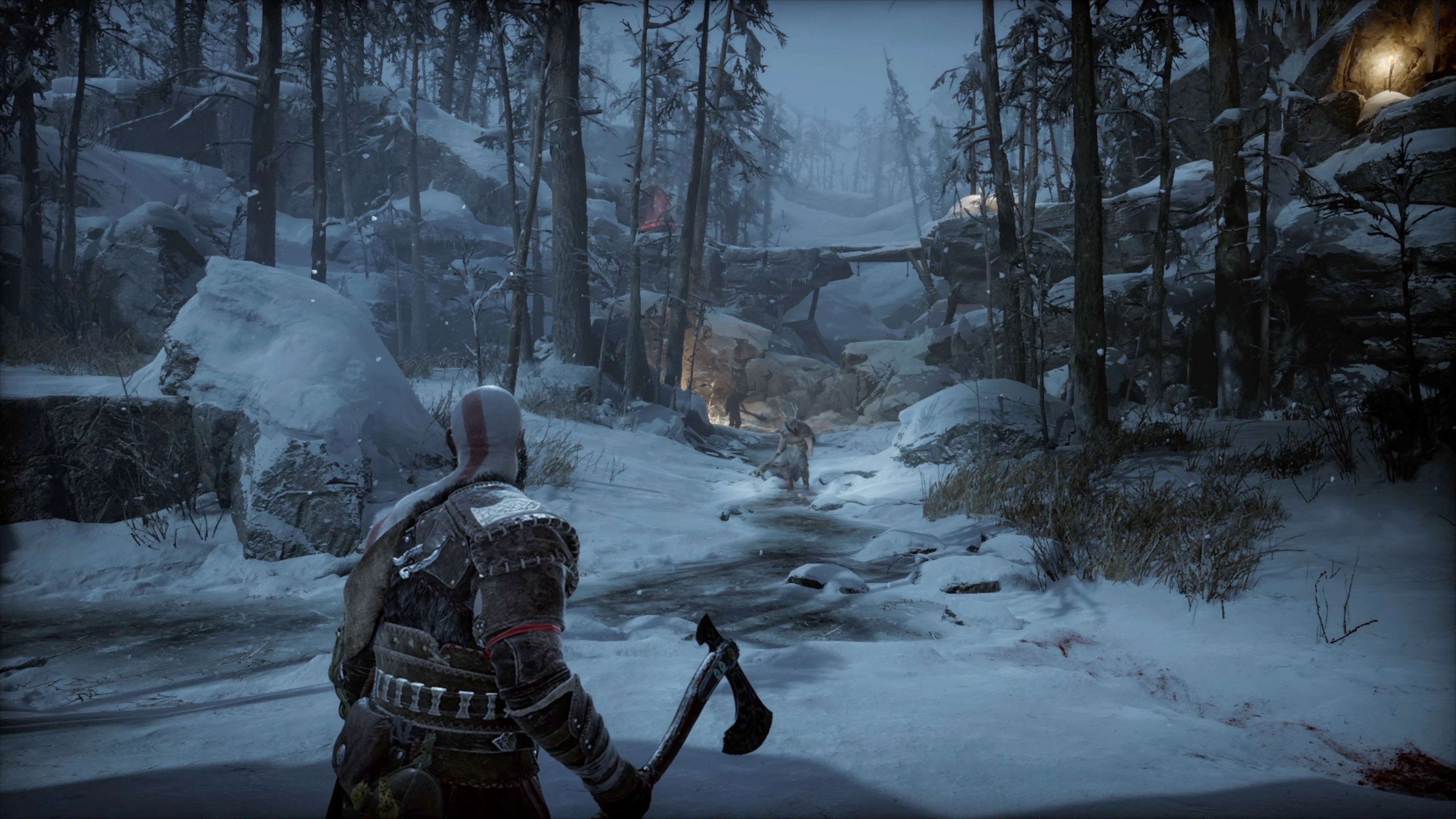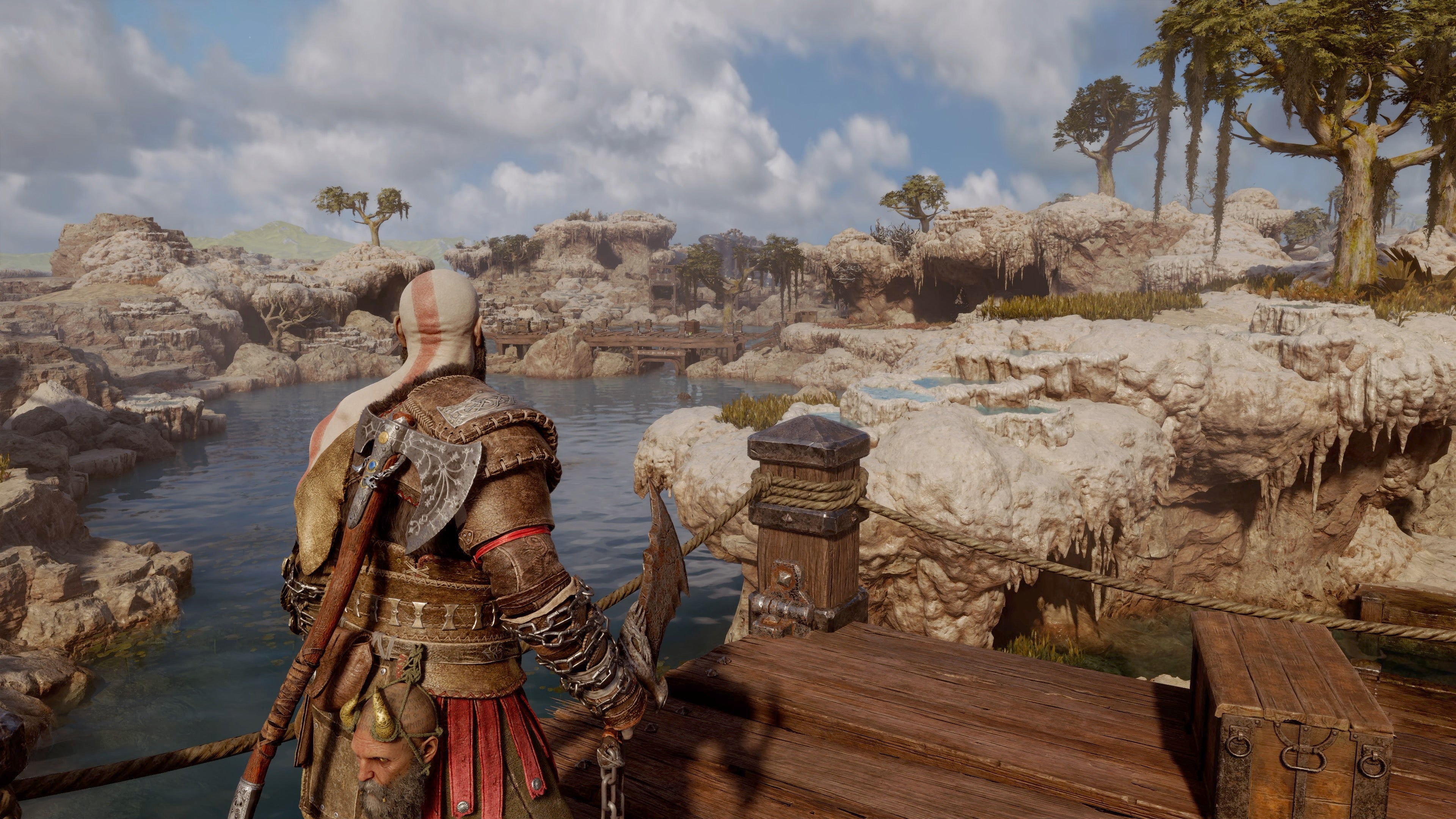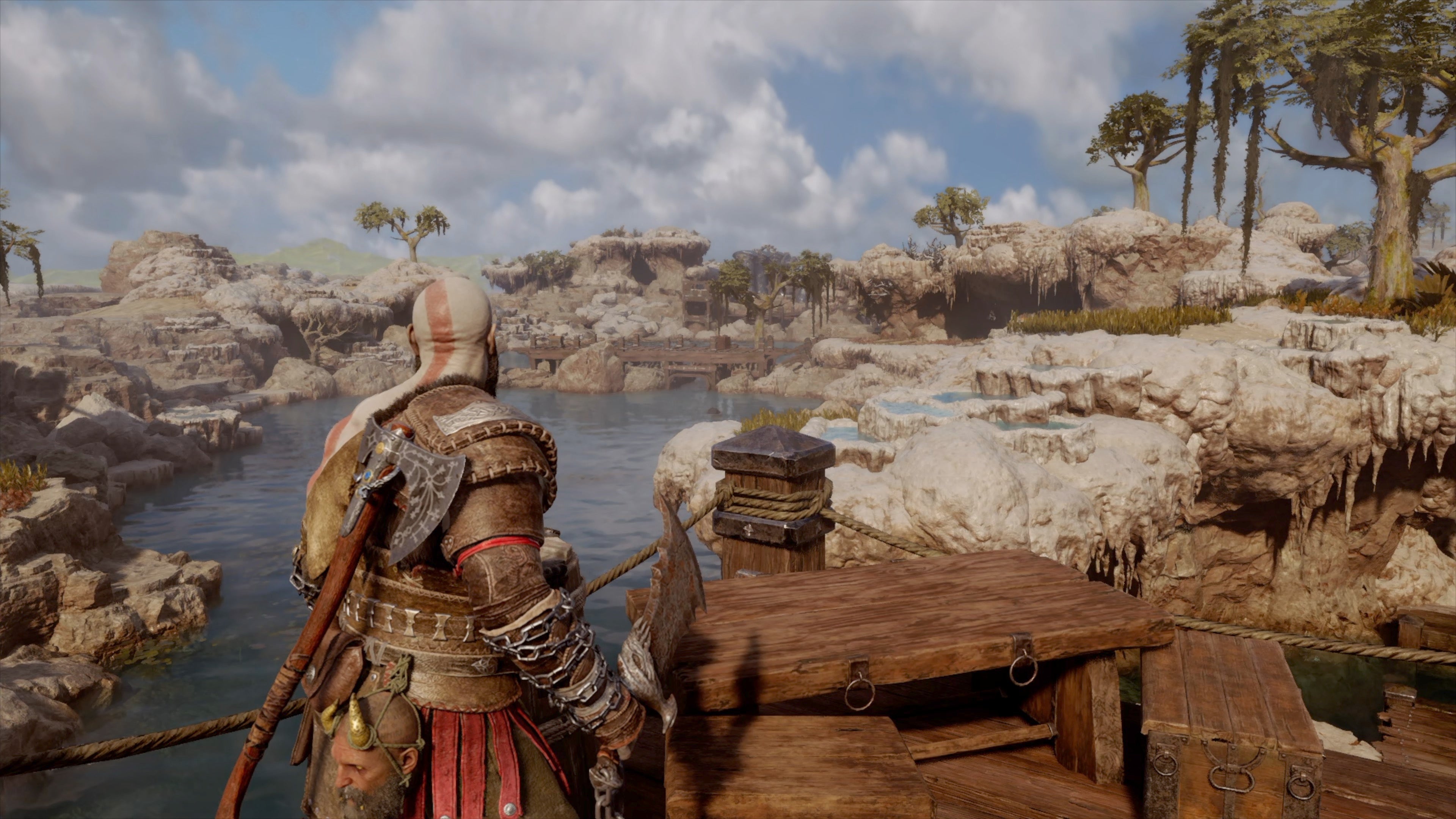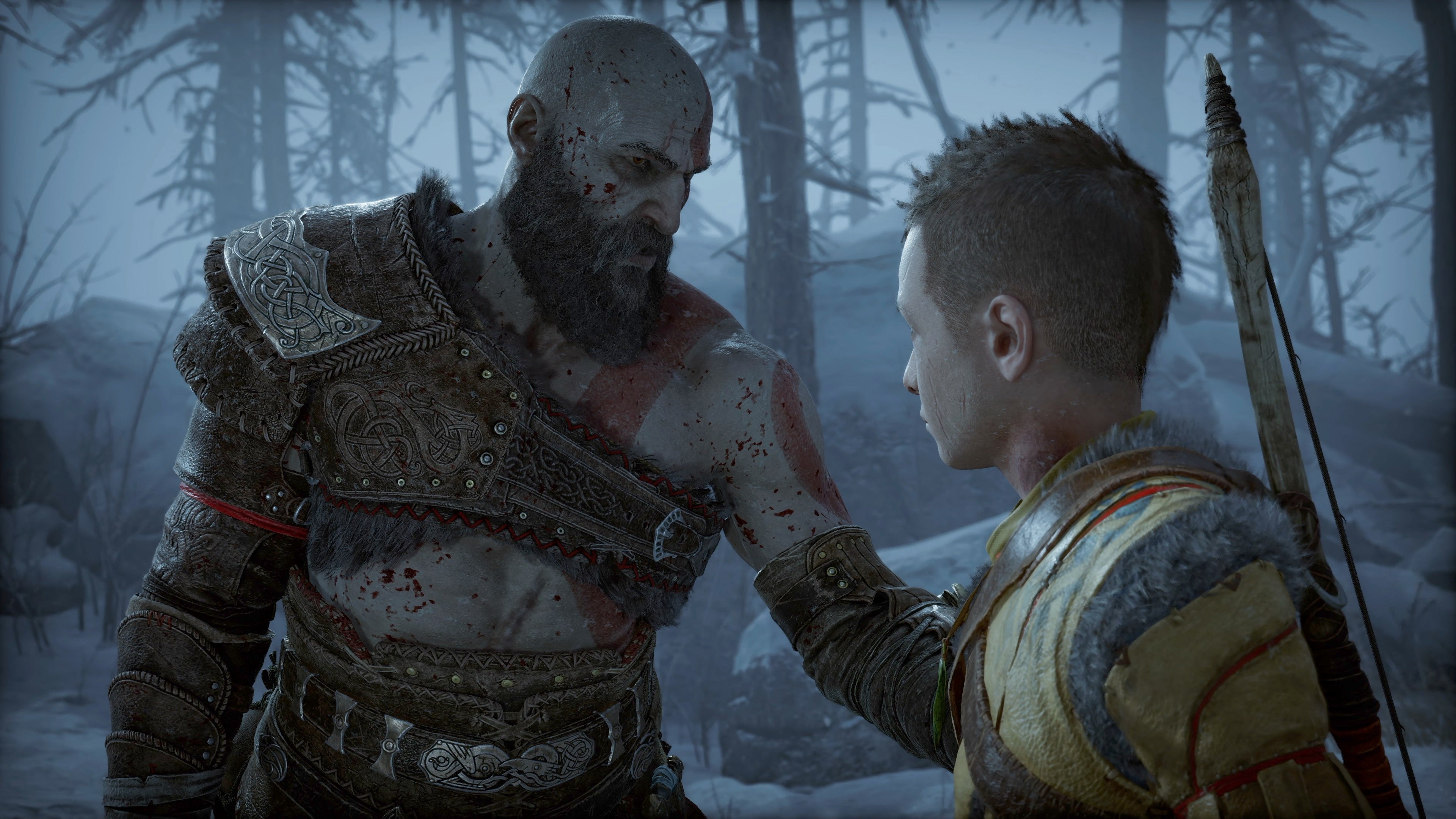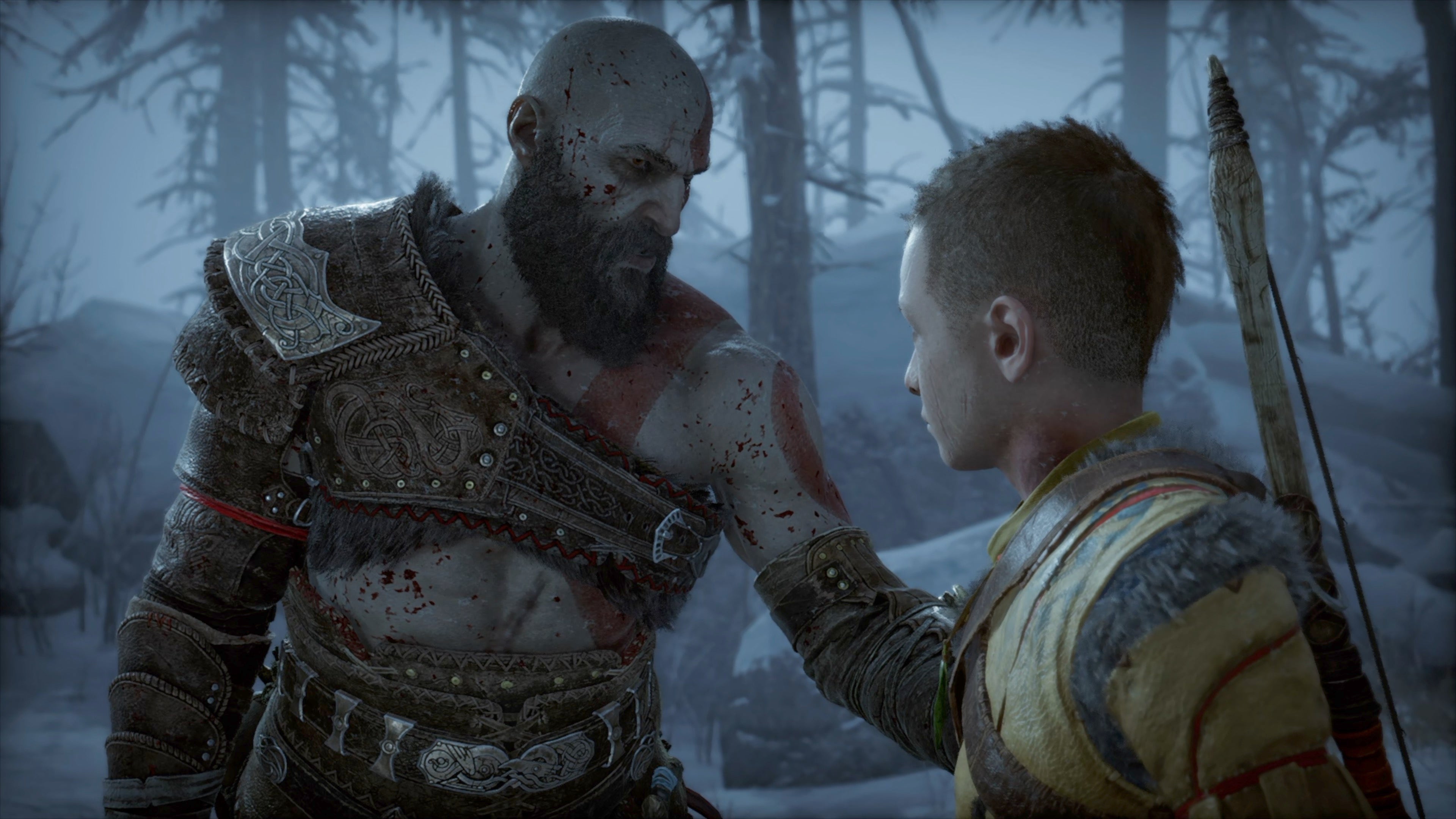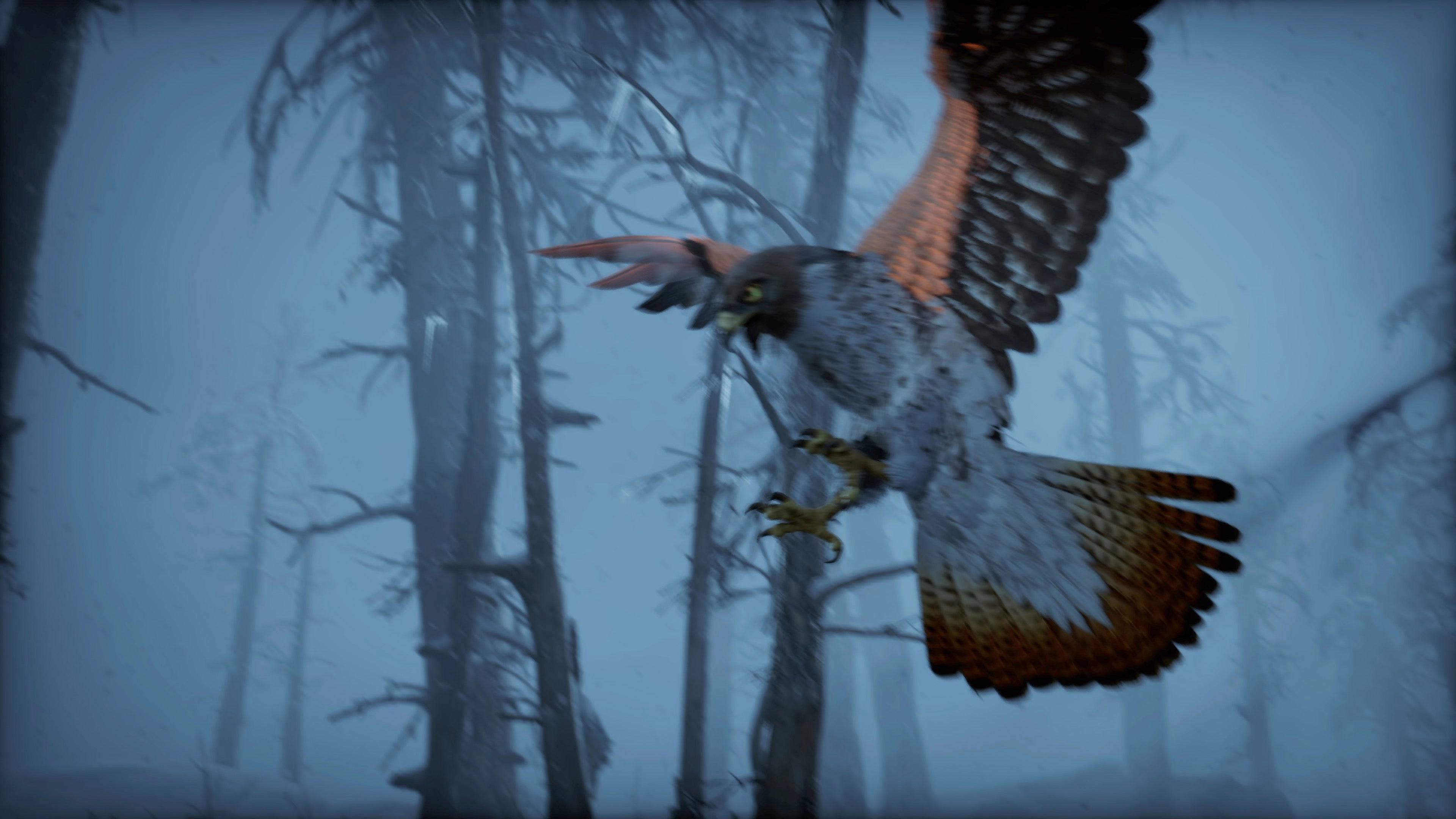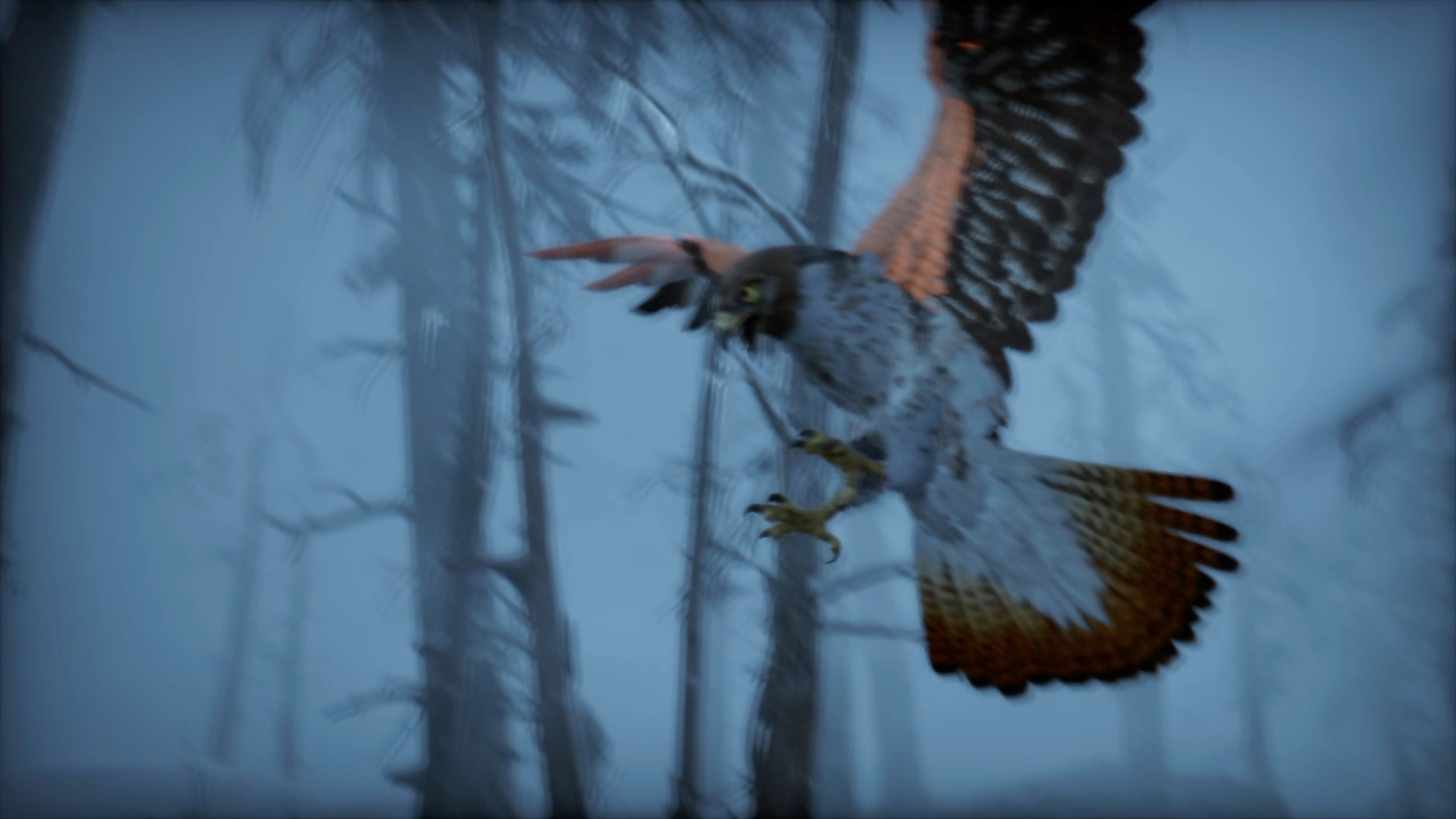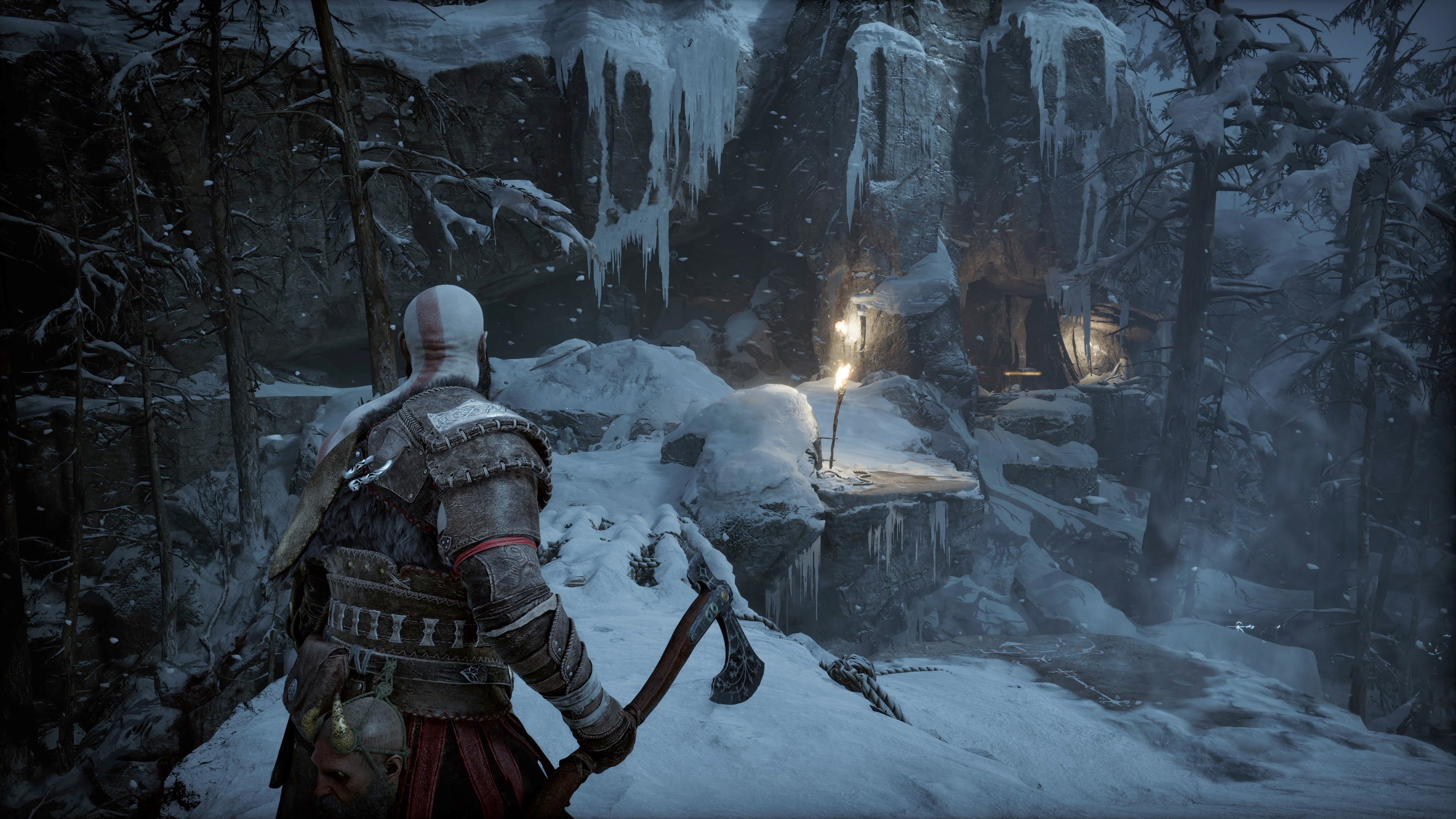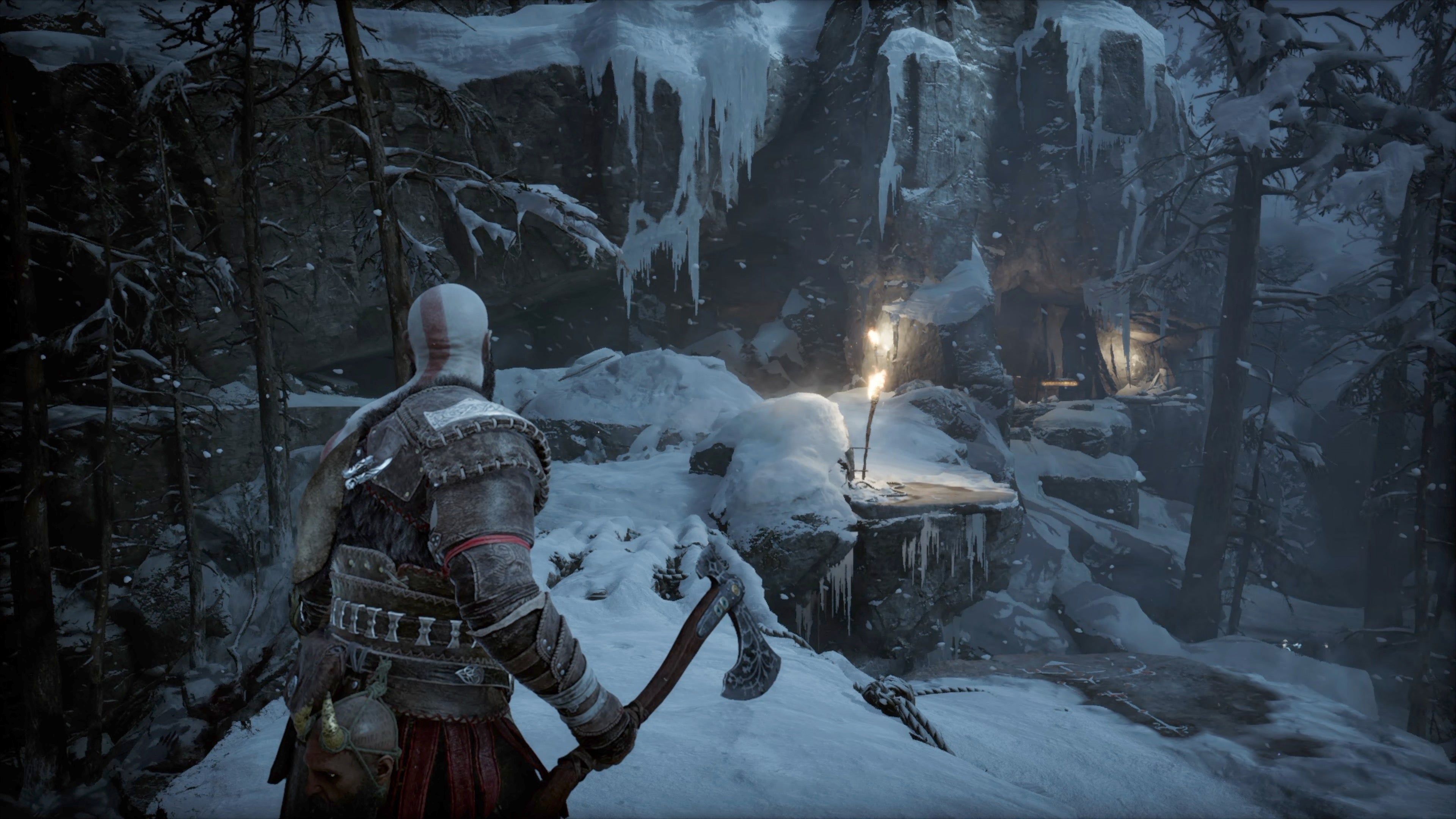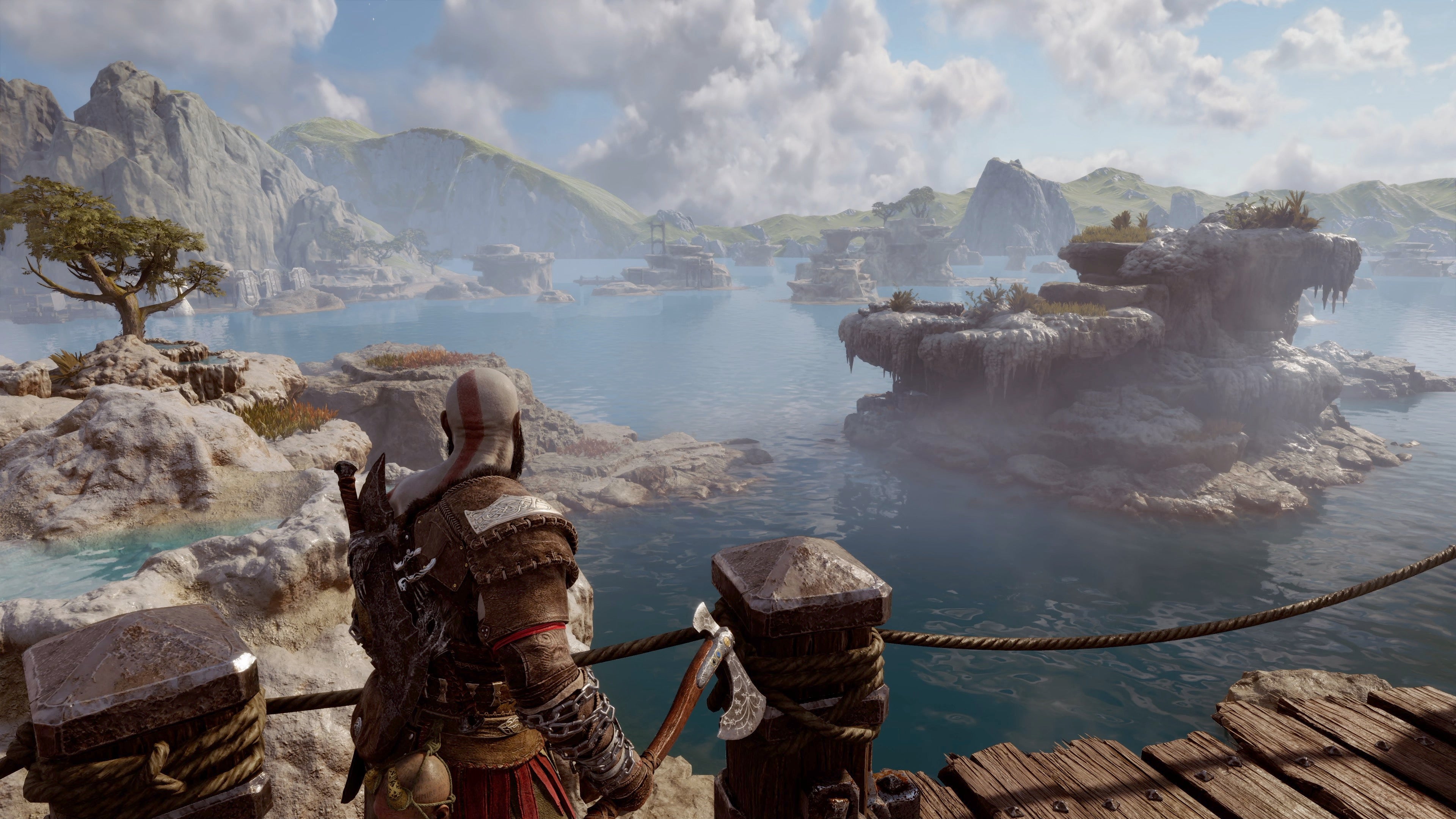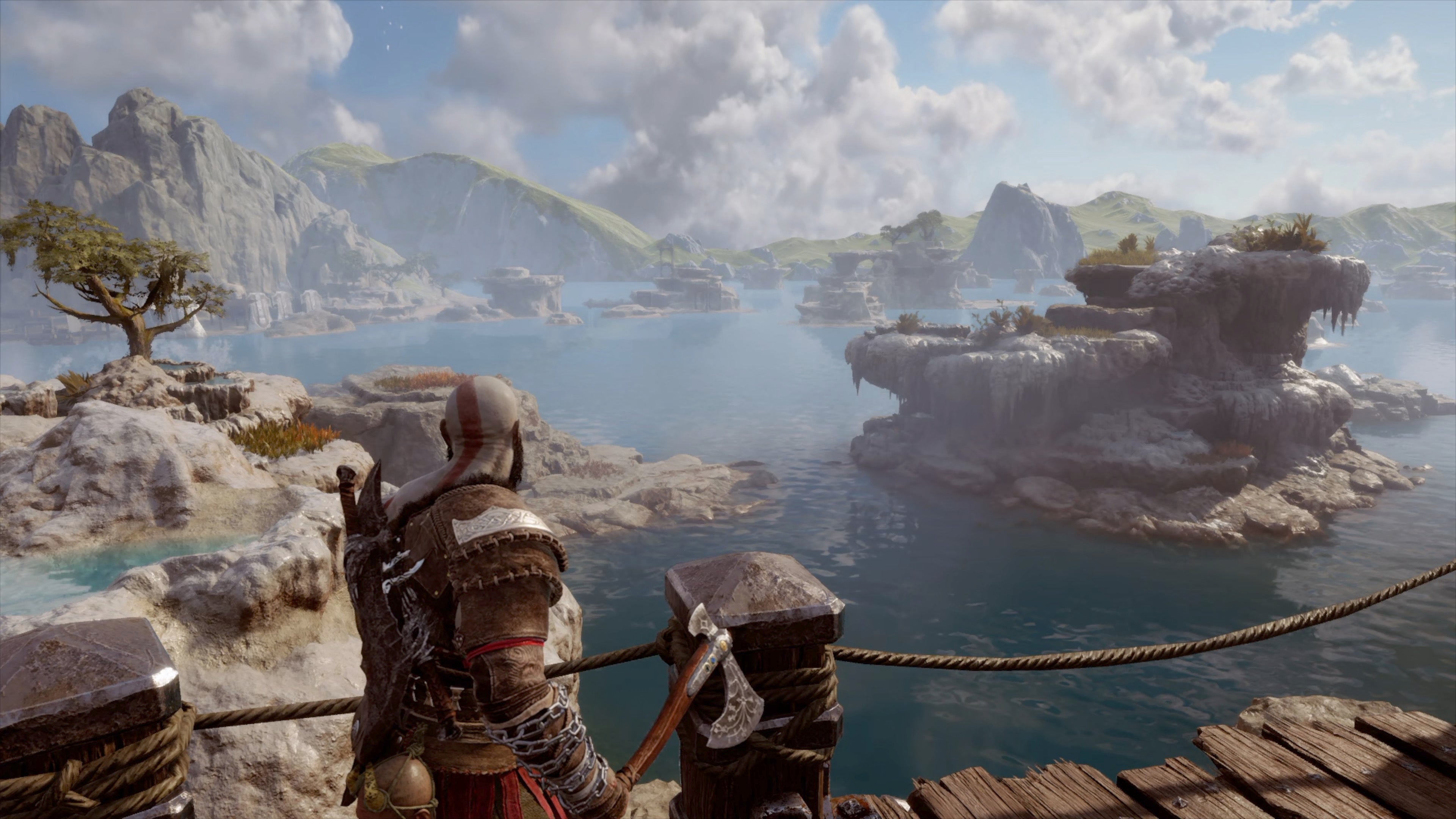At the fundamental level, this release is a fascinating take on cross-gen development that looks beautiful and plays smoothly on PlayStation 5, while operating with a similar level of polish on PS4, albeit with lower target resolutions and frame-rates. Yes, there are cuts on the lower-spec machines but the drawbacks are not really noticeable outside of head-to-head comparisons - and the enhancements exclusive to PlayStation 5 often have a habit of becoming far less noticeable within the lower resolution window of the base PS4 especially. The cross-gen philosophy here is entirely different than, say, Horizon Forbidden West - and that’s largely down to a very different development process. In creating its vast, detail-rich open world, Guerrilla Games relies heavily on procedural generation to add detail - something that cannot be done on God of War, which is much more of an artist-driven endeavour, where this styel of programmatic enhancement simply isn’t possible. The Santa Monica Studio approach is to add performance, visual refinements and consistency. So, for example, a key focus was in solving light leakage problems with the game’s global illumination solution. The improvements are palpable - especially so on PS5 - where specular elements that ‘glow’ on PS4 consoles are largely resolved. The zoomer comparison gallery below shows a couple of examples of this but generally speaking, indirect lighting is superior on PS5 with screen-space directional occlusion (as seen in the PC port of God of War 2018) playing a key role. Further enhancements in terms of depth are evident thanks to improved shadow quality. All modes on PS5 offer improved shadow map quality compared to PlayStation 4 but the resolution mode improves shadows still further, thanks to contact hardening - essentially, the closer the shadow is to the object casting it, the ‘harder’ the shadow outline, which gradually softens with distance. PS4-quality shadows are absolutely fine, it should be stated, but it’s another example of PlayStation 5 having the horsepower to afford the extra refinement. That philosophy also extends to lighting, where PlayStation 5 gains extra lights, especially noticeable in cinematic cutscenes. Both background lighting and character illumination can be improved, depending on where the artists at Santa Monica Studio decide to add them. The effect is quite subtle and shouldn’t be confused with the more obvious ‘hero lights’ that caused some debate with Horizon Forbidden West. Elsewhere, screen-space reflections are also of a higher quality on the new PlayStation, while the quality mode benefits from cubemaps married up with a touch of software RT to better position them for a more realistic effect. Meanwhile, motion blur and depth of field effects scale with resolution and frame-rate, leading to some interesting results. Despite only running at 30fps, the base PlayStation 4 looks remarkably smooth in its delivery - more so than the quality mode on PlayStation 5. This is down to simulation of a longer shutter speed, and it’s an effect that’s delivered excellent results elsewhere too, most noticeably in Forza Horizon 5’s 30fps quality mode. We’ve already talked about image quality and performance on PlayStation 5, but to quickly recap, the quality mode runs at native 4K at 30fps, with a 120Hz 40fps variant that introduces a touch of dynamic resolution scaling to maintain performance. Meanwhile, the performance mode runs at 60fps locked with a 1440p to 4K DRS window, while a high frame-rate mode locked to 1440p offers unlocked performance for 120Hz screens. There are plenty of great options here but ultimately, any of the performance modes work best for us - so where does that leave PlayStation 4 consoles, bearing in mind that 60fps is off the table? As the PlayStation 4 was so important to Santa Monica Studio, you’re getting a native 1080p presentation with no dynamic resolution scaling and a 30fps target - and that’s locked in the vast majority of play, with only isolated drops. Combined with the motion blur implementation, it’s a great experience for Sony’s venerable machine. PS4 Pro? In common with God of War 2018, there are two modes and the quality offering is our pick. Checkerboard rendering is gone in favour of temporal anti-aliasing/upscaling (TAAU) with a 1440p to 1656p resolution window - but the experience works well on a 4K screen, especially so in more static screens where the comparison with an actual UHD presentation is favourable. There is a performance mode running in a 40-50fps window, with occasional dips beneath (the lowest we saw was 34-35fps) and this runs with 1080p to 1656p DRS range but in actual gaming, the highest resolution we saw came in at just 1152p. There is something of a curious twist, however. If you run the PlayStation 4 version of Ragnarök on PS5, similar functionality to God of War 2018 kicks in. The two modes are gone in favour of just the performance mode, which taps into the power of PS5 to run at a much higher resolution and frame-rate than PS4 Pro hardware it’s actually intended for. Perhaps this is here to give the best possible experience to PS5 owners who accidentally download the PS4 version, but of course, our advice would be to download the correct version in the first place! God of War: Ragnarök presents a very different take on cross-gen compared to other titles - one that doesn’t focus on extracting the most out of the new console, but instead embellishes and enhances beautifully designed artwork with strategic, but effective upgrades. This is balanced with an equally solid performance boost: ultimately, if you want 60 frames per second (or higher) frame-rates, you’ll need PlayStation 5. So yes, we stand by our statement that the PS5 game is like a really good PC port, but what this piece hopefully articulates is that the base experience on the older PlayStation consoles remains exceptional - and it’s remarkable to see these visuals play out on a machine that’s just a few days away from celebrating its ninth birthday.
